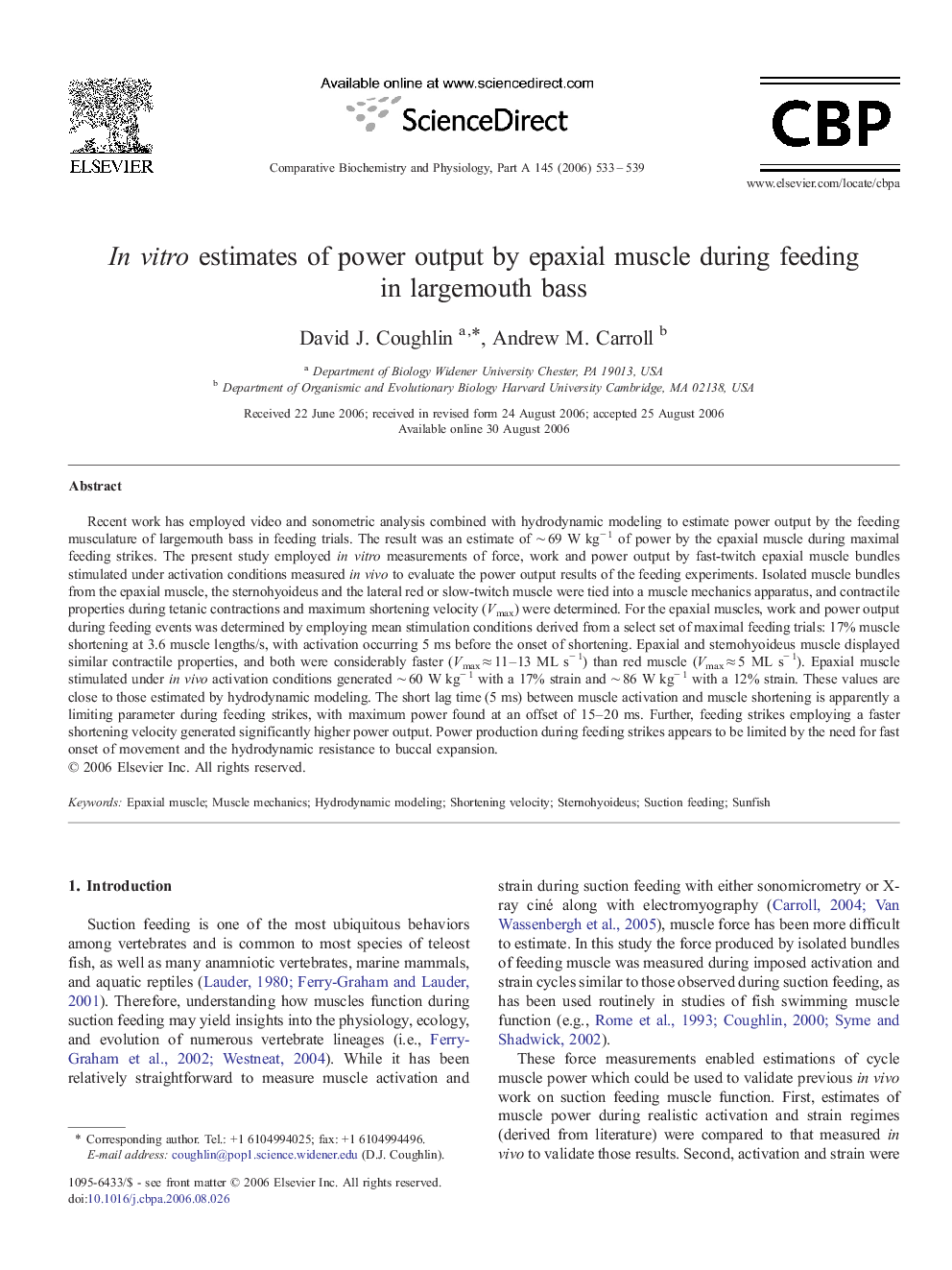| کد مقاله | کد نشریه | سال انتشار | مقاله انگلیسی | نسخه تمام متن |
|---|---|---|---|---|
| 1974617 | 1060362 | 2006 | 7 صفحه PDF | دانلود رایگان |

Recent work has employed video and sonometric analysis combined with hydrodynamic modeling to estimate power output by the feeding musculature of largemouth bass in feeding trials. The result was an estimate of ∼ 69 W kg− 1 of power by the epaxial muscle during maximal feeding strikes. The present study employed in vitro measurements of force, work and power output by fast-twitch epaxial muscle bundles stimulated under activation conditions measured in vivo to evaluate the power output results of the feeding experiments. Isolated muscle bundles from the epaxial muscle, the sternohyoideus and the lateral red or slow-twitch muscle were tied into a muscle mechanics apparatus, and contractile properties during tetanic contractions and maximum shortening velocity (Vmax) were determined. For the epaxial muscles, work and power output during feeding events was determined by employing mean stimulation conditions derived from a select set of maximal feeding trials: 17% muscle shortening at 3.6 muscle lengths/s, with activation occurring 5 ms before the onset of shortening. Epaxial and sternohyoideus muscle displayed similar contractile properties, and both were considerably faster (Vmax ≈ 11–13 ML s− 1) than red muscle (Vmax ≈ 5 ML s− 1). Epaxial muscle stimulated under in vivo activation conditions generated ∼ 60 W kg− 1 with a 17% strain and ∼ 86 W kg− 1 with a 12% strain. These values are close to those estimated by hydrodynamic modeling. The short lag time (5 ms) between muscle activation and muscle shortening is apparently a limiting parameter during feeding strikes, with maximum power found at an offset of 15–20 ms. Further, feeding strikes employing a faster shortening velocity generated significantly higher power output. Power production during feeding strikes appears to be limited by the need for fast onset of movement and the hydrodynamic resistance to buccal expansion.
Journal: Comparative Biochemistry and Physiology Part A: Molecular & Integrative Physiology - Volume 145, Issue 4, December 2006, Pages 533–539